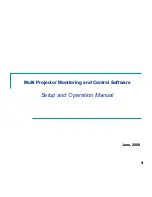
2-5
Getting Started
Before You Begin
Understanding the IDM Model
The first thing to understand, is that IDM works within the general concept of
‘domains’ or ‘realms’. Basically, realms are very large organizational units;
every user belongs to one, and only one, realm. While it is possible to have
multiple realms, most organizations have only one, for example, hp.com or
csuchico.edu.
The basic operational model of IDM involves Users and Groups. Every User
belongs to a Group – in IDM these are called Access Policy Groups (APGs).
Each APG has an Access Policy defined for it, which governs the access rights
that are applied to its Users as they enter the network.
In the IDM GUI, the top level of the navigation tree is the Realm, with all other
information for APGs, and RADIUS Servers beneath the Realm in the naviga-
tion tree. Users are linked to the Realm to which they belong, and the Access
Policy Group to which they are assigned.
The IDM configuration tools are available at the top level. The definition of
times, locations, network resources, and access profiles is independent of
individual Realms or Groups. You can define multiple locations, times, and
network resources, then create multiple access profiles to be applied to any
Access Policy Group, in any Realm that exists within IDM.
Summary of Contents for J4813A
Page 1: ...ProCurve Identity Driven Manager User s Guide Software Release 2 0 ...
Page 20: ...1 16 About ProCurve Identity Driven Manager ProCurve Support ...
Page 69: ...3 15 Using Identity Driven Manager Configuring Times ...
Page 124: ...3 70 Using Identity Driven Manager Using the User Import Wizard ...
Page 140: ...A 6 IDM Technical Reference Types of User Events This page is intentionally unused ...
Page 144: ......
















































